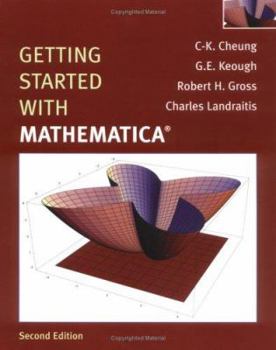Getting Started with Mathematica
Mathematica is computer software that performs abstract computation as well as numerical computation. It can produce graphics ranging from graphs of functions in the plane to intricate, three-dimensional plots of surfaces and parametric curves. It also provides support for programming. This guide gives a stream-lined, but fairly extensive introduction to Mathematica. It primarily covers Mathematica 5.0, although references to earlier versions are included in cases where significant changes have been made. Each of the Guide's 28 Chapters has been structured around an area of undergraduate mathematics (e.g., one-variable differential Calculus, multiple integration, differential equations, linear algebra). Each chapter defines relevant commands used in that area, addresses their syntax, and provides basic examples. Each chapter ends with one or more sections which include more technical examples, offer useful tips, and diagnose common problems that users are likely to encounter. Two appendices are also included that explain how to work in the Mathematica notebook environment and use certain input features.
Format:Paperback
Language:English
ISBN:0471478156
ISBN13:9780471478157
Release Date:March 2005
Publisher:Wiley
Length:231 Pages
Weight:1.16 lbs.
Dimensions:0.5" x 7.9" x 9.9"













